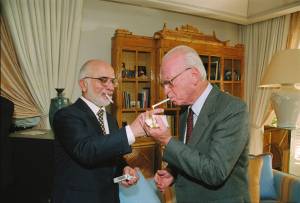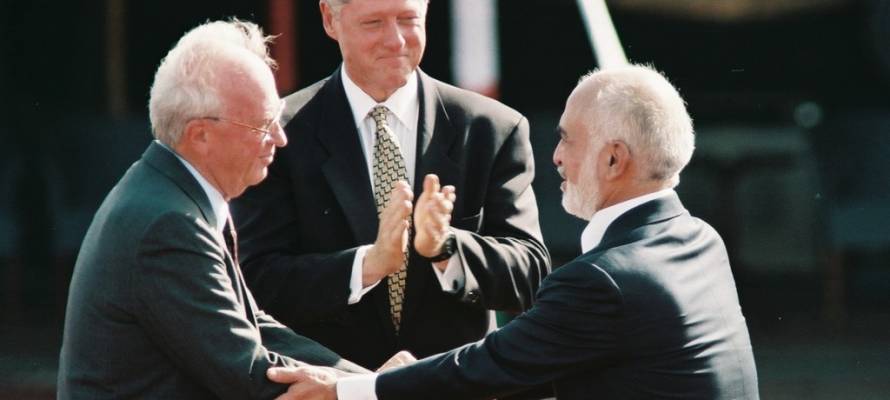On October 26, 1994, Israeli Prime Minister Yitzhak Rabin and King Hussein of Jordan signed a peace treaty at the Wadi Arava Border Crossing.
On October 26, 1994, Israeli Prime Minister Yitzhak Rabin and King Hussein of Jordan signed the second peace treaty between the Jewish State and an Arab country. The event took place at the Wadi Arava Border Crossing between the southern Israeli city of Eilat and Aqaba, Jordan.
Egyptian President Anwar Assad signed an historic peace treaty in Washington on March 26, 1979, with then Israeli Prime Minister Menachem Begin.
The Jordanian-Israeli agreement was preceded three months earlier, on July 15, by the Washington Declaration that was signed at the White House Hussein and Rabin. According to the Declaration, both countries had committed to achieving a “just, lasting and comprehensive peace” between the Arab states and Israel, including the Palestinians.

Jordanian King Hussein lights PM Yitzhak Rabin’s cigarette at the royal residence in Akaba soon after the signing of the peace treaty. (GPO)
The bilateral peace treaty settled border disputes, established water-sharing protocols and agreed to cooperate in areas of trade, tourism and freedom of access to religious and historical sites.
Recently, largely a result of incitement by the Palestinian Authority, the Al-Aqsa Mosque and the Temple Mount, both under the administration of the Jordanian Waqf (Muslim Trust), have been the epicenter of violence against Israeli civilians and security personnel, particularly regarding non-Muslim visitors to the Mount, Judaism’s holiest site.
By: United with Israel Staff
